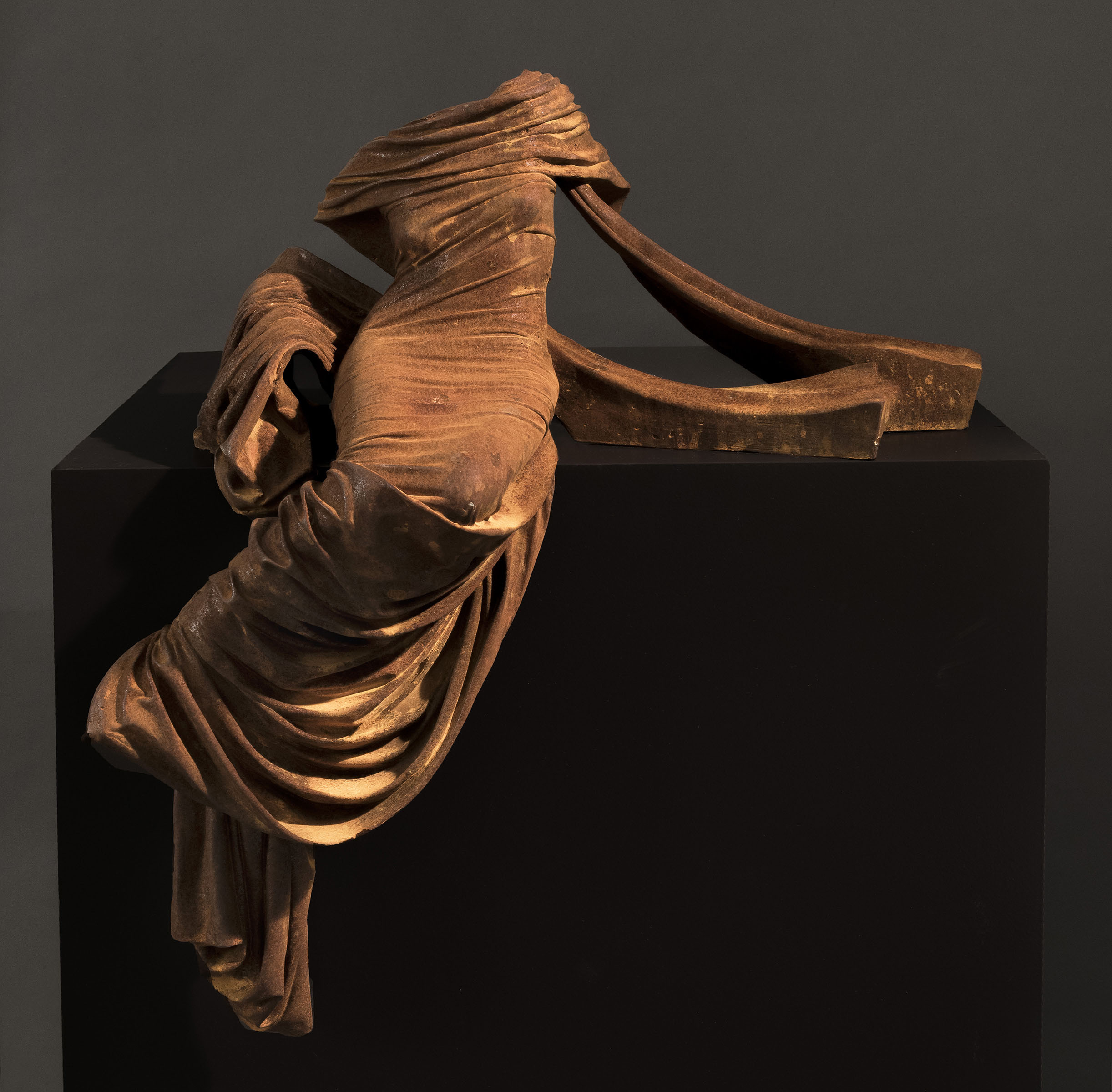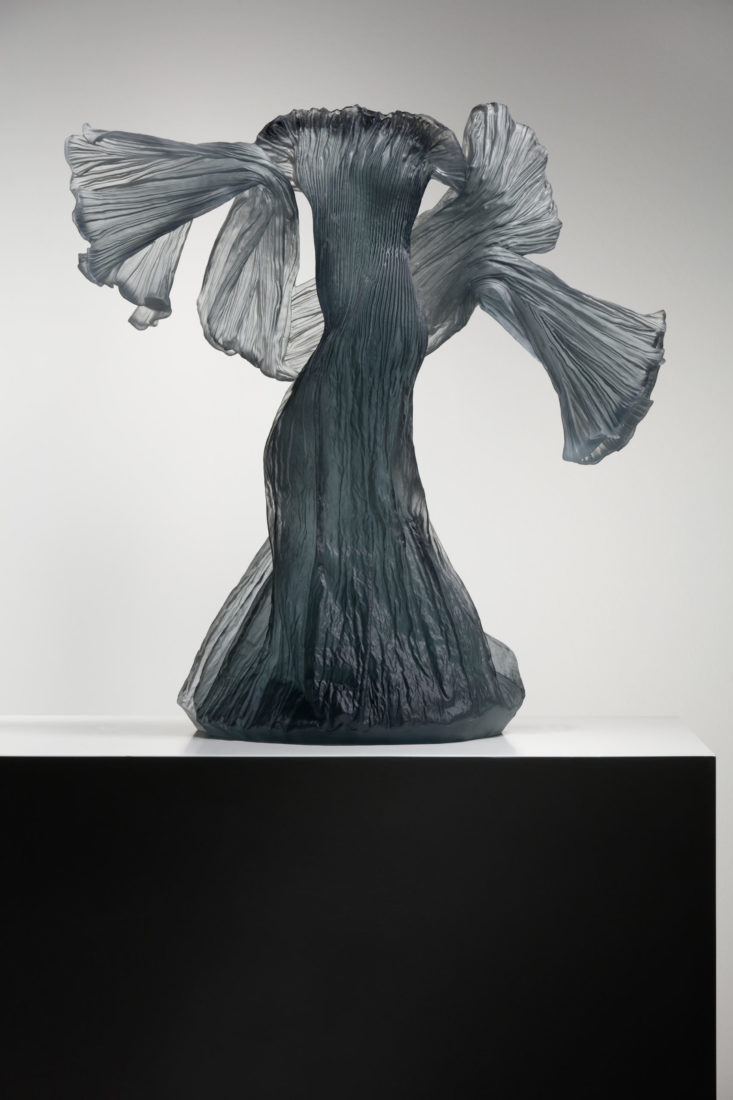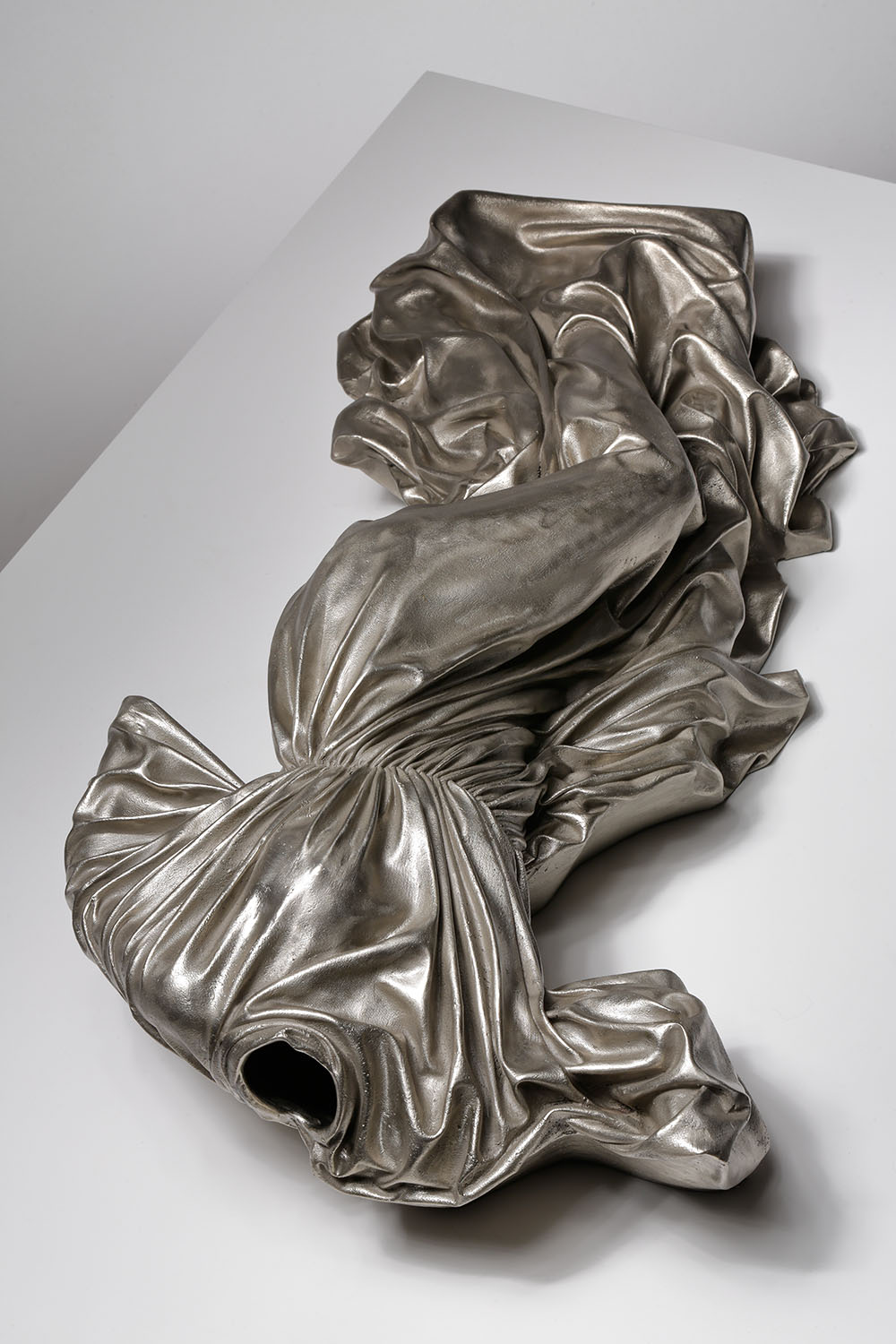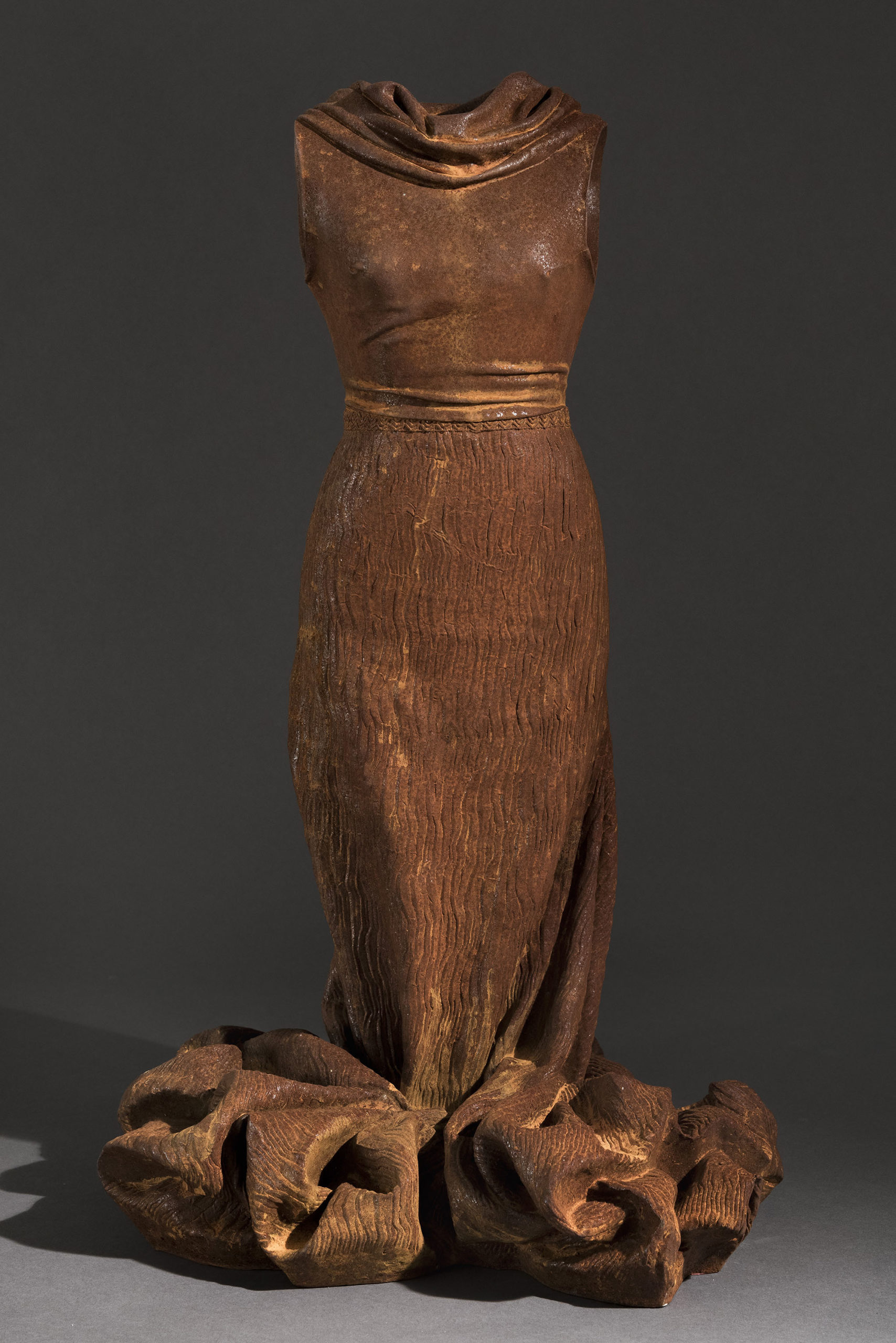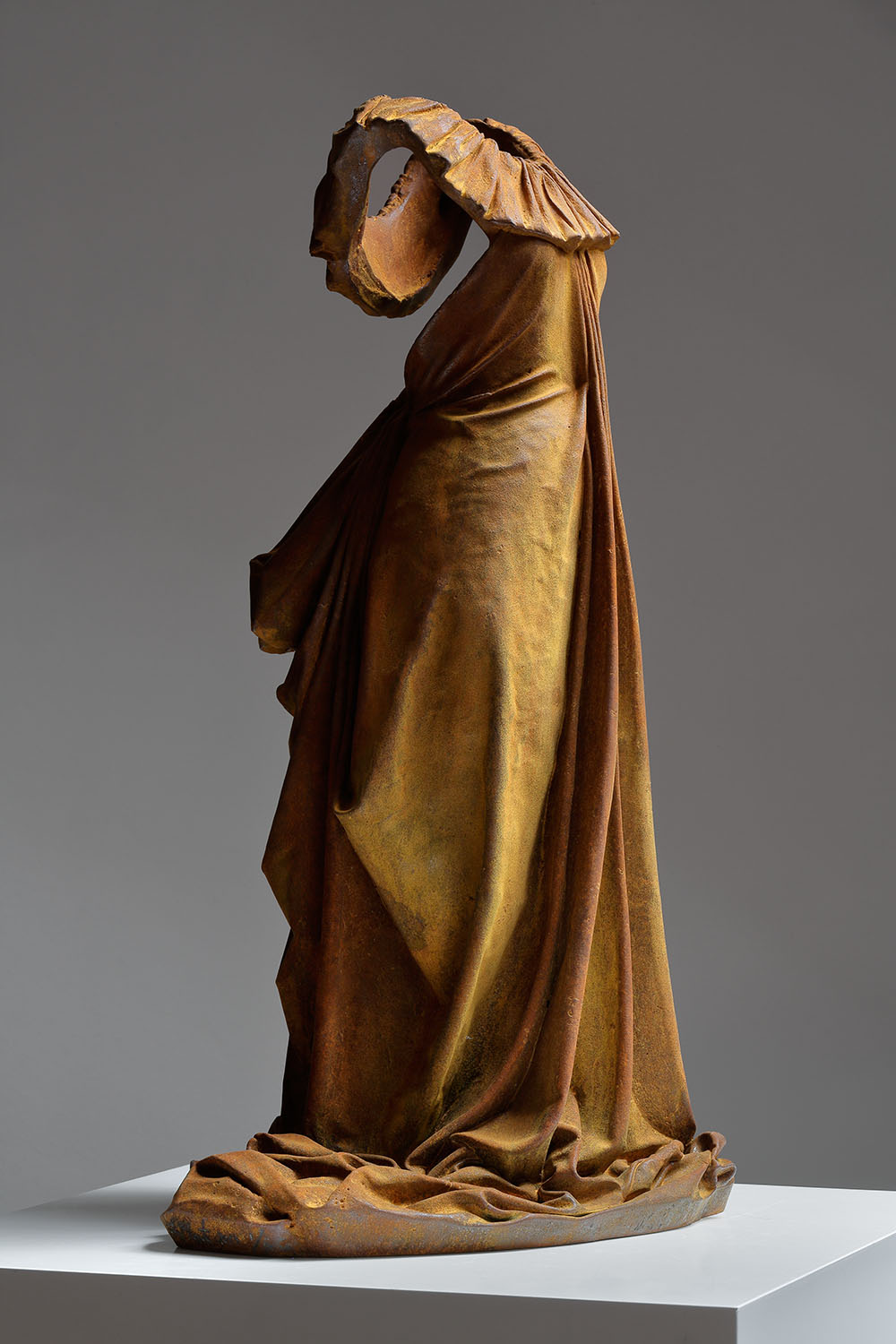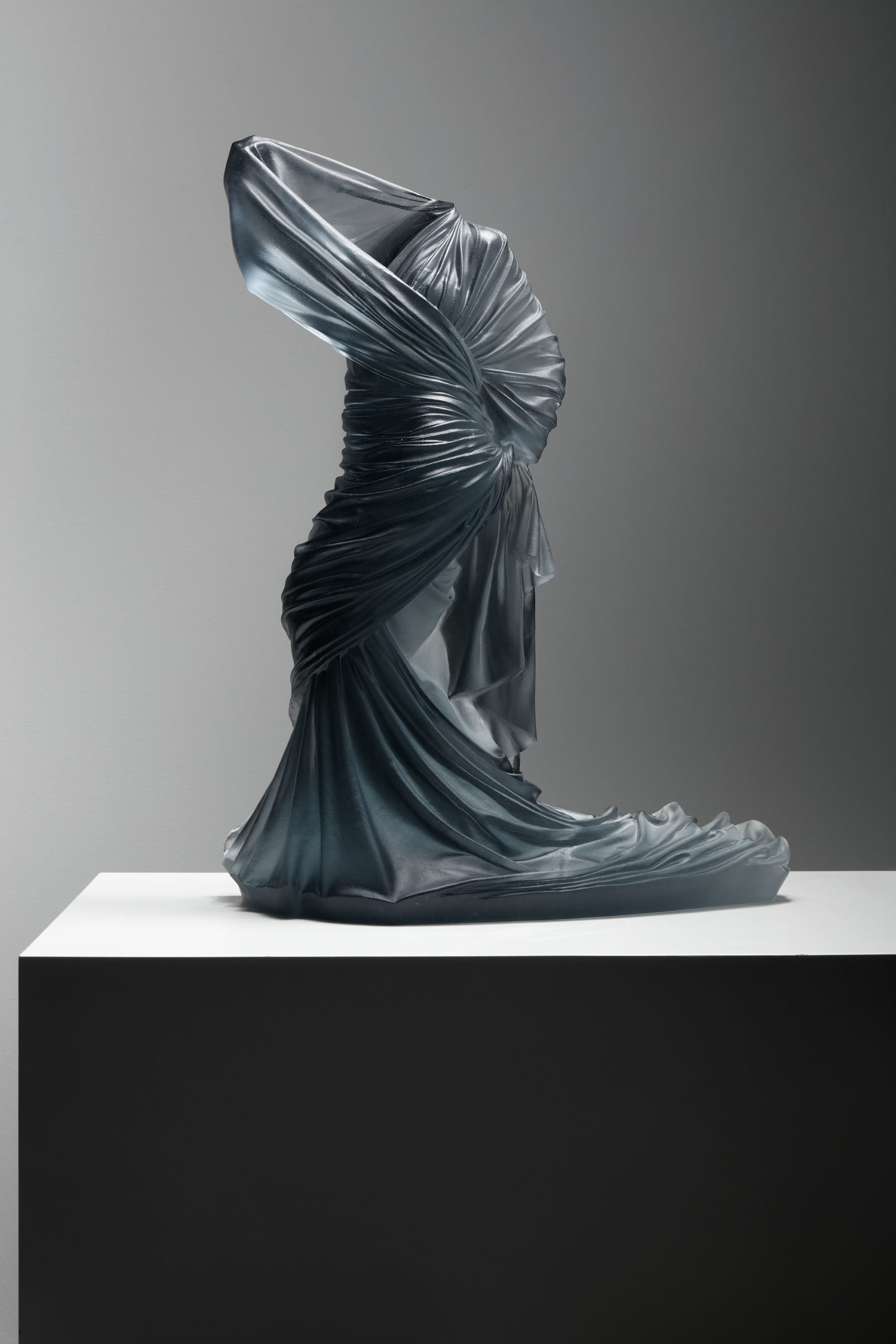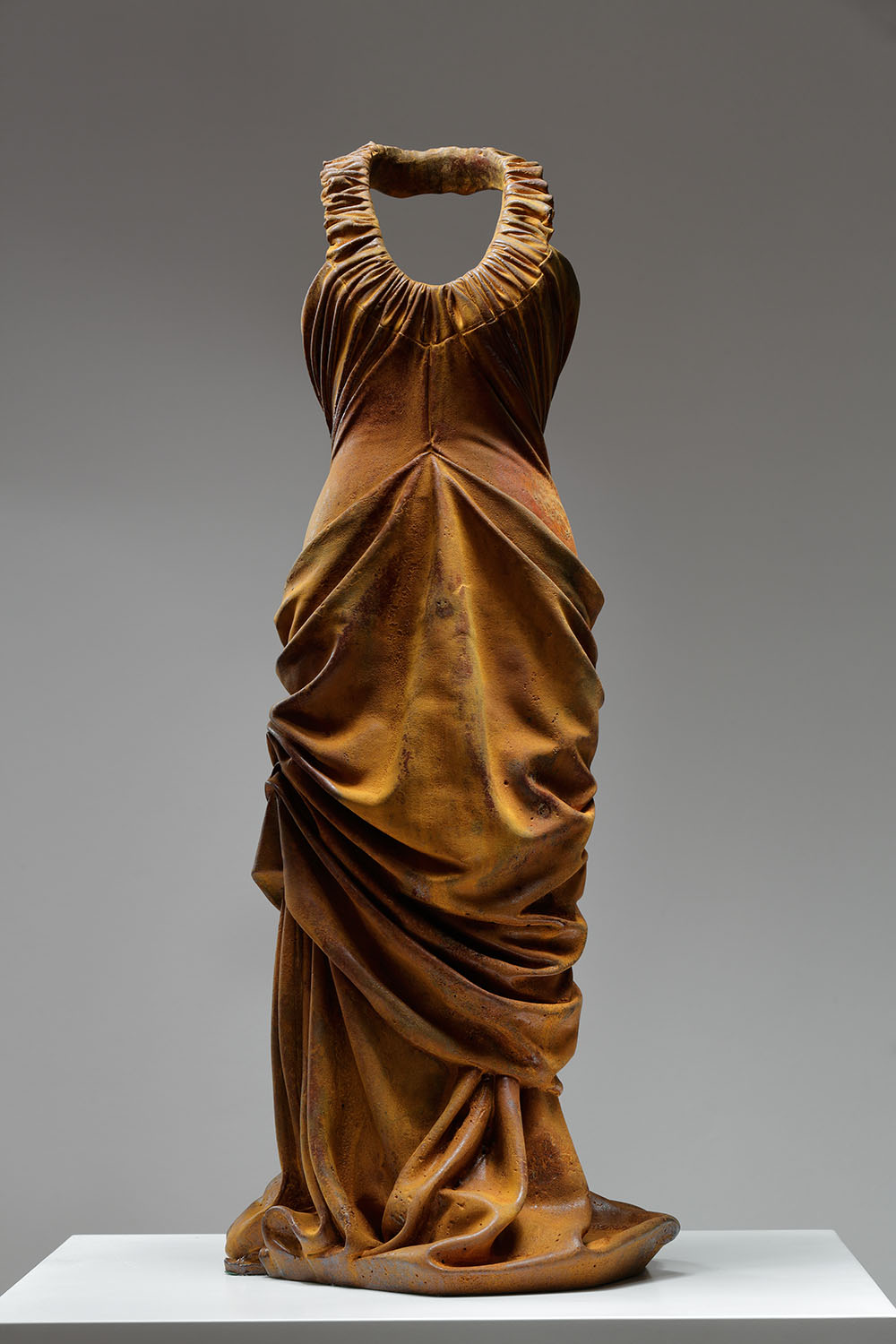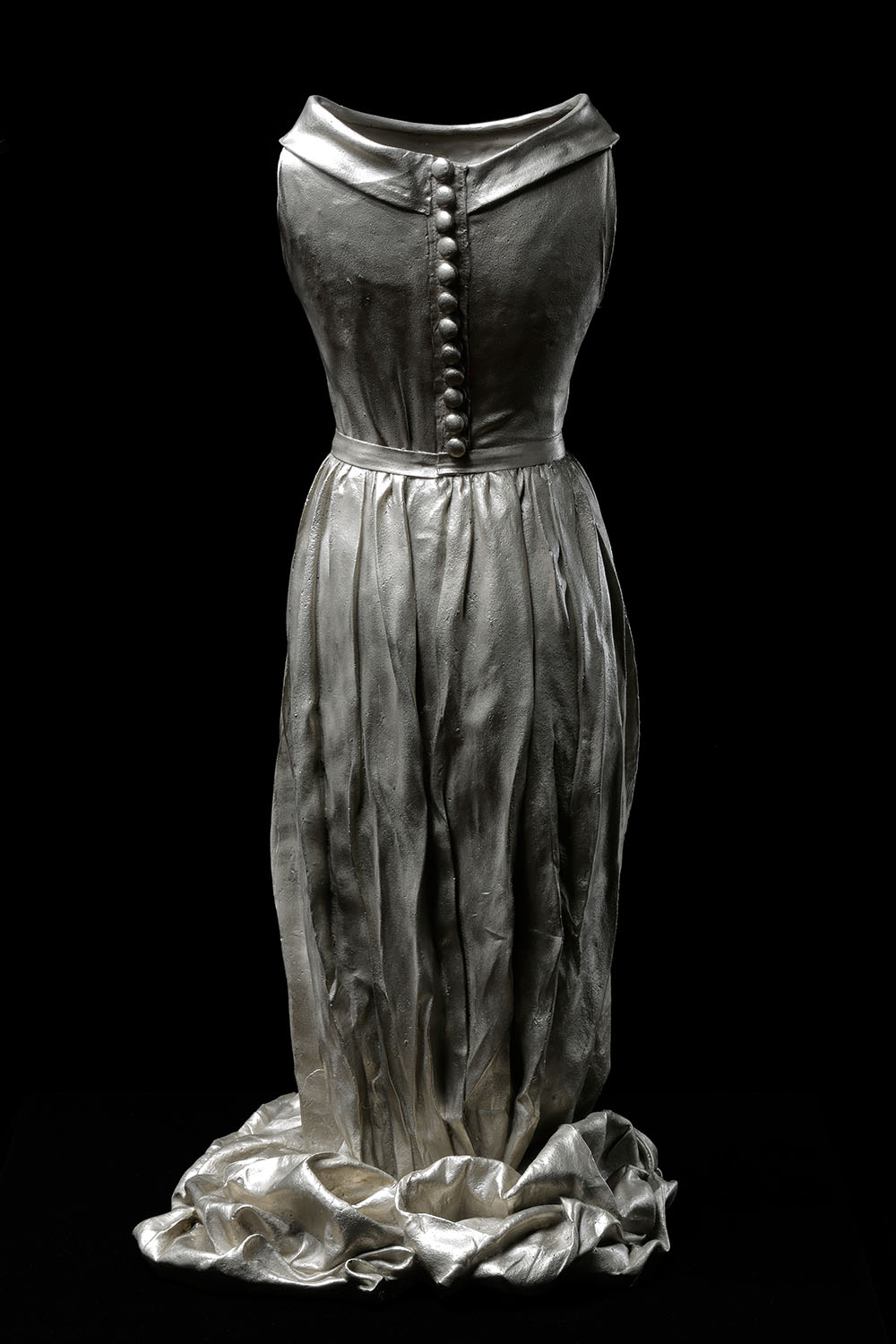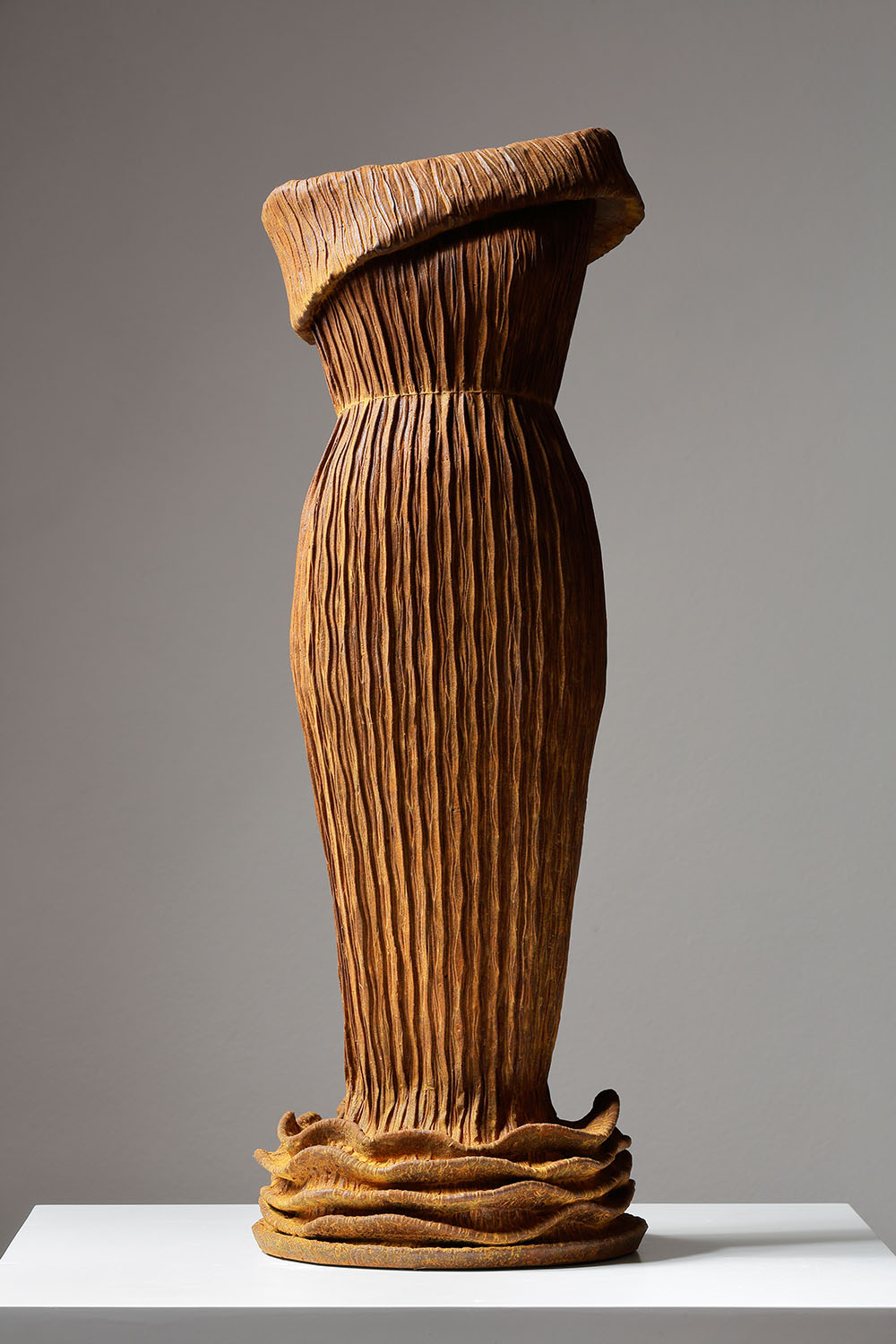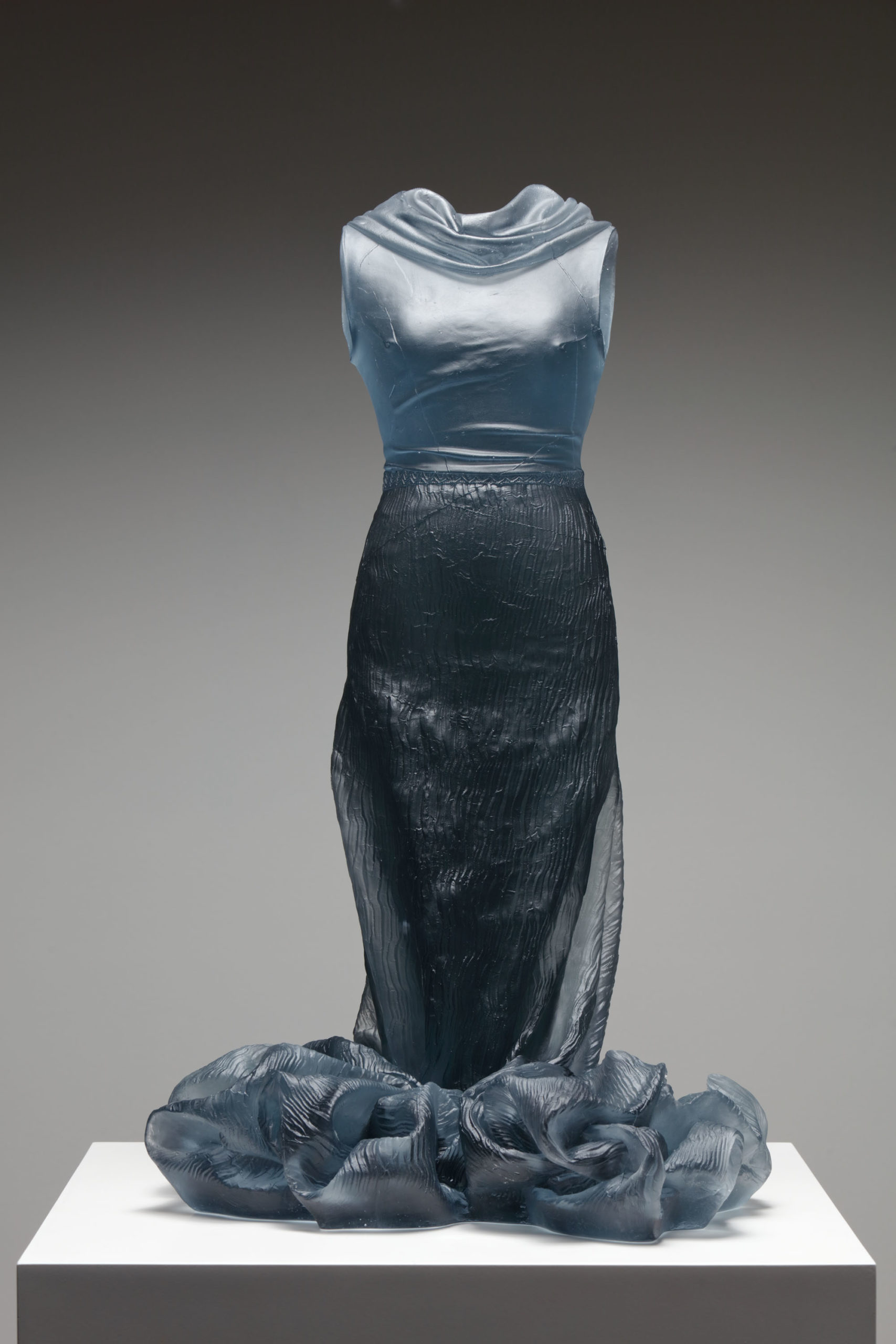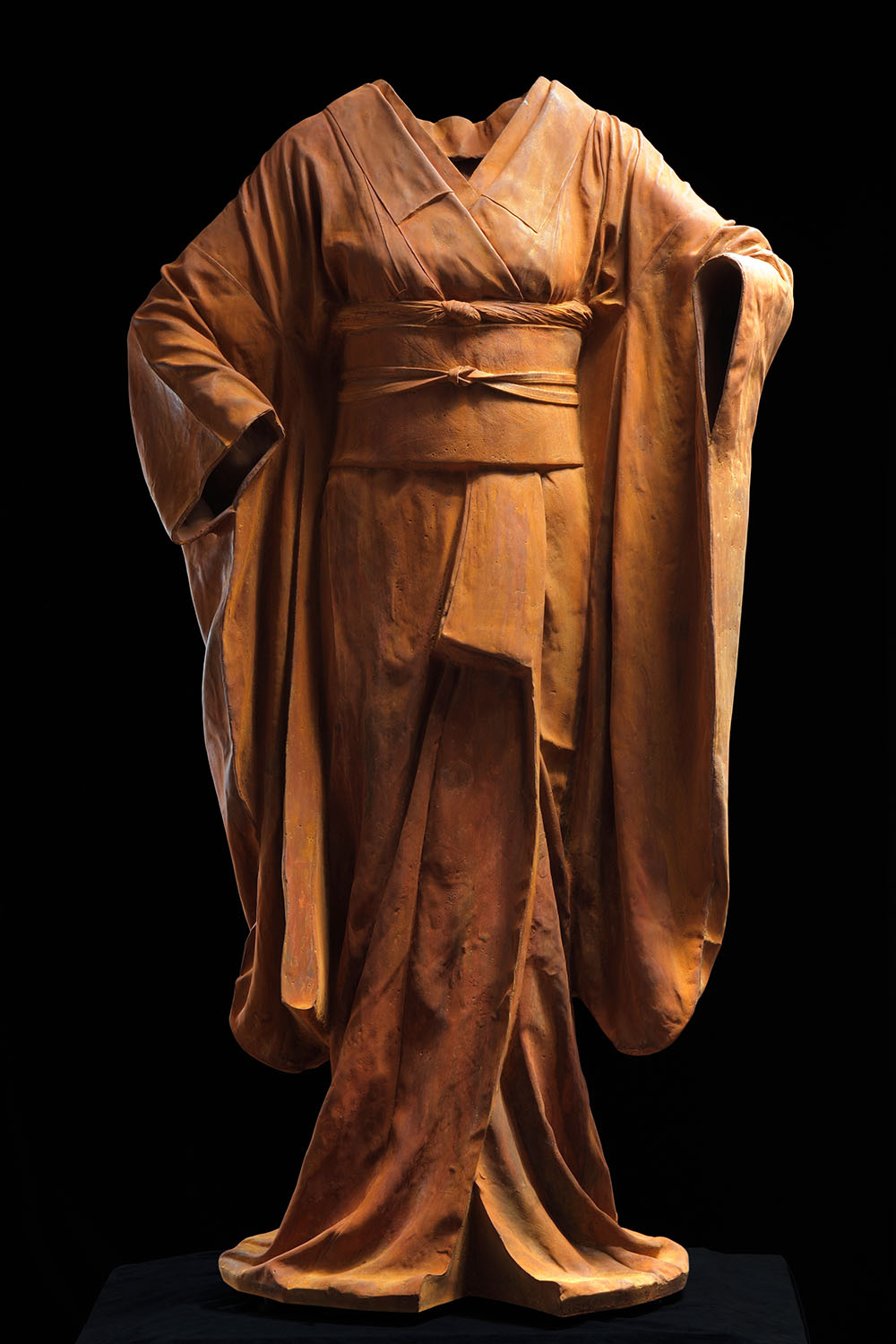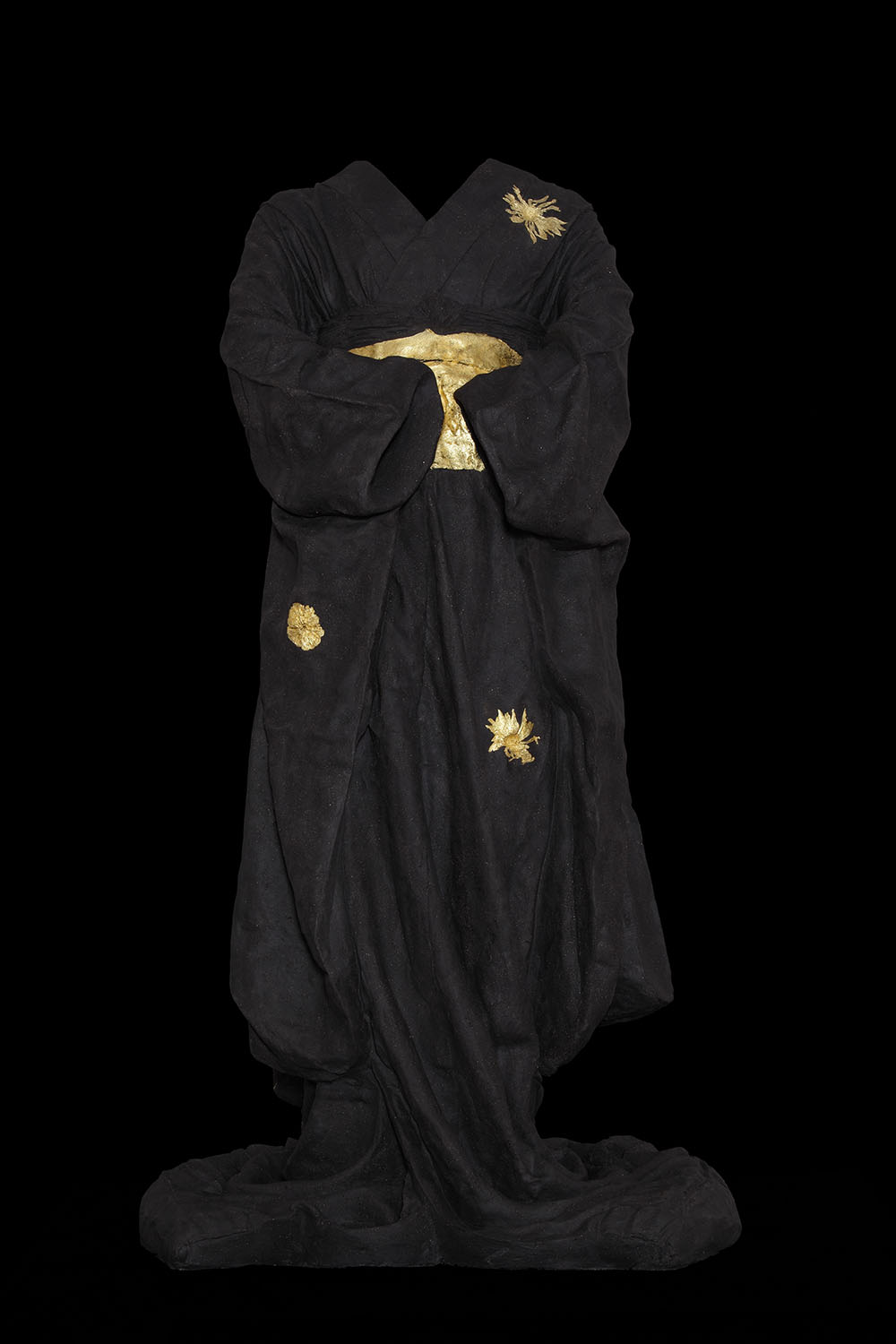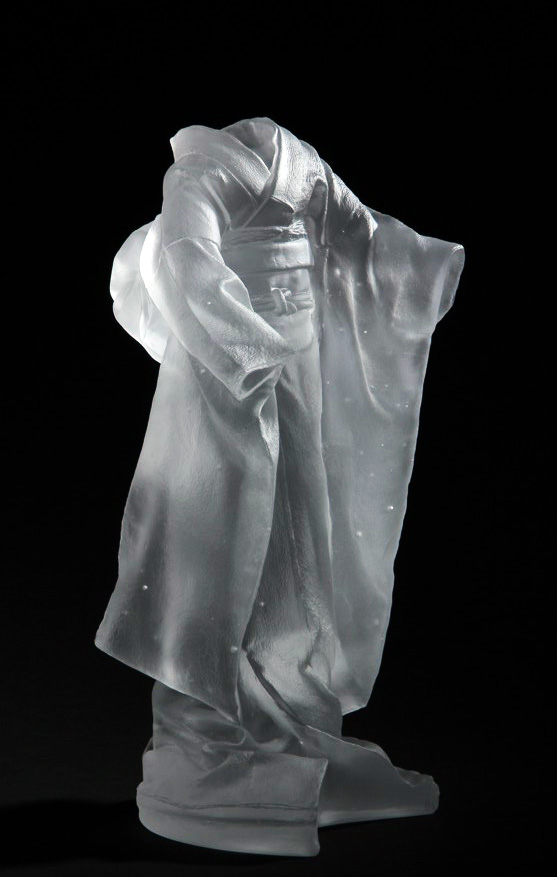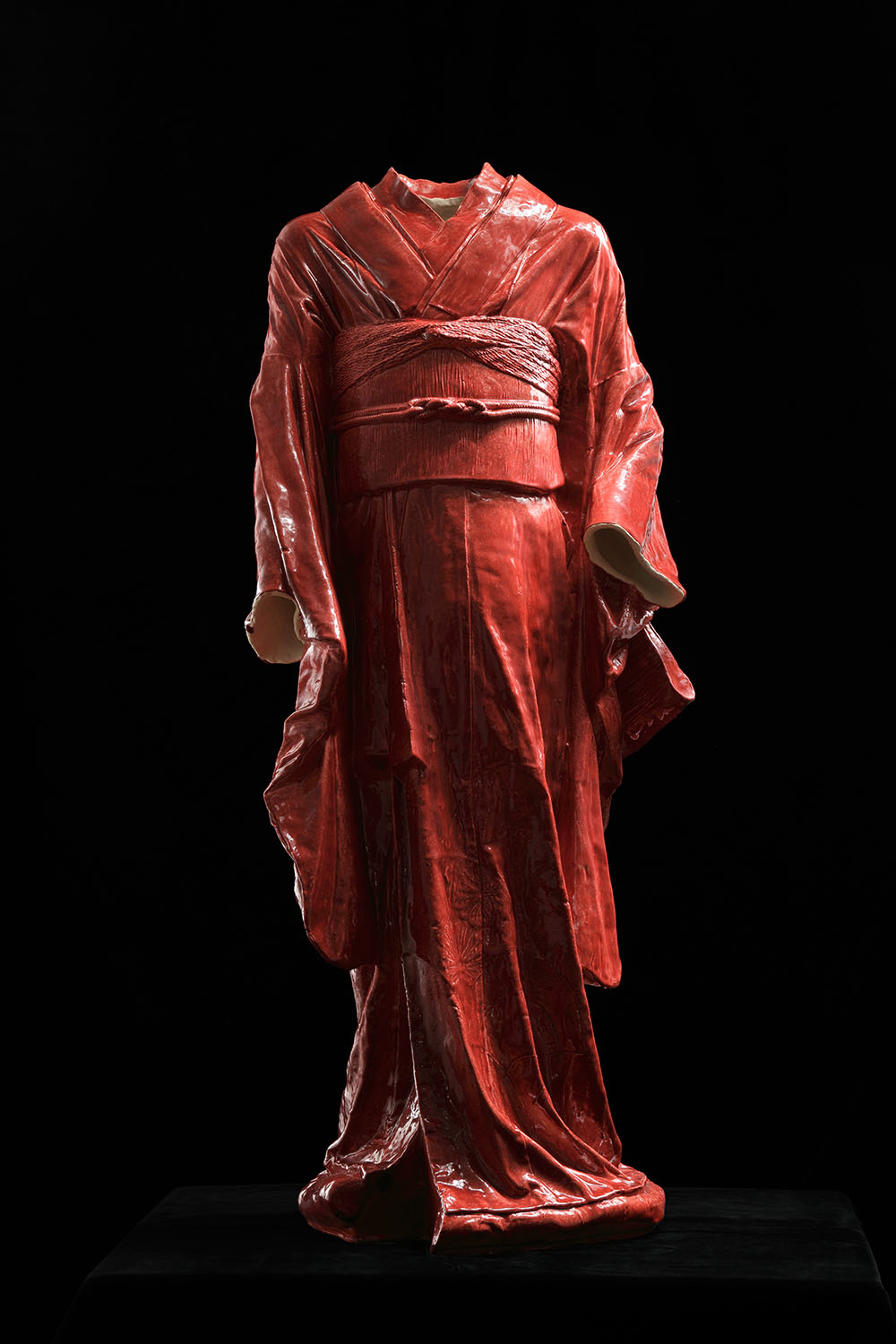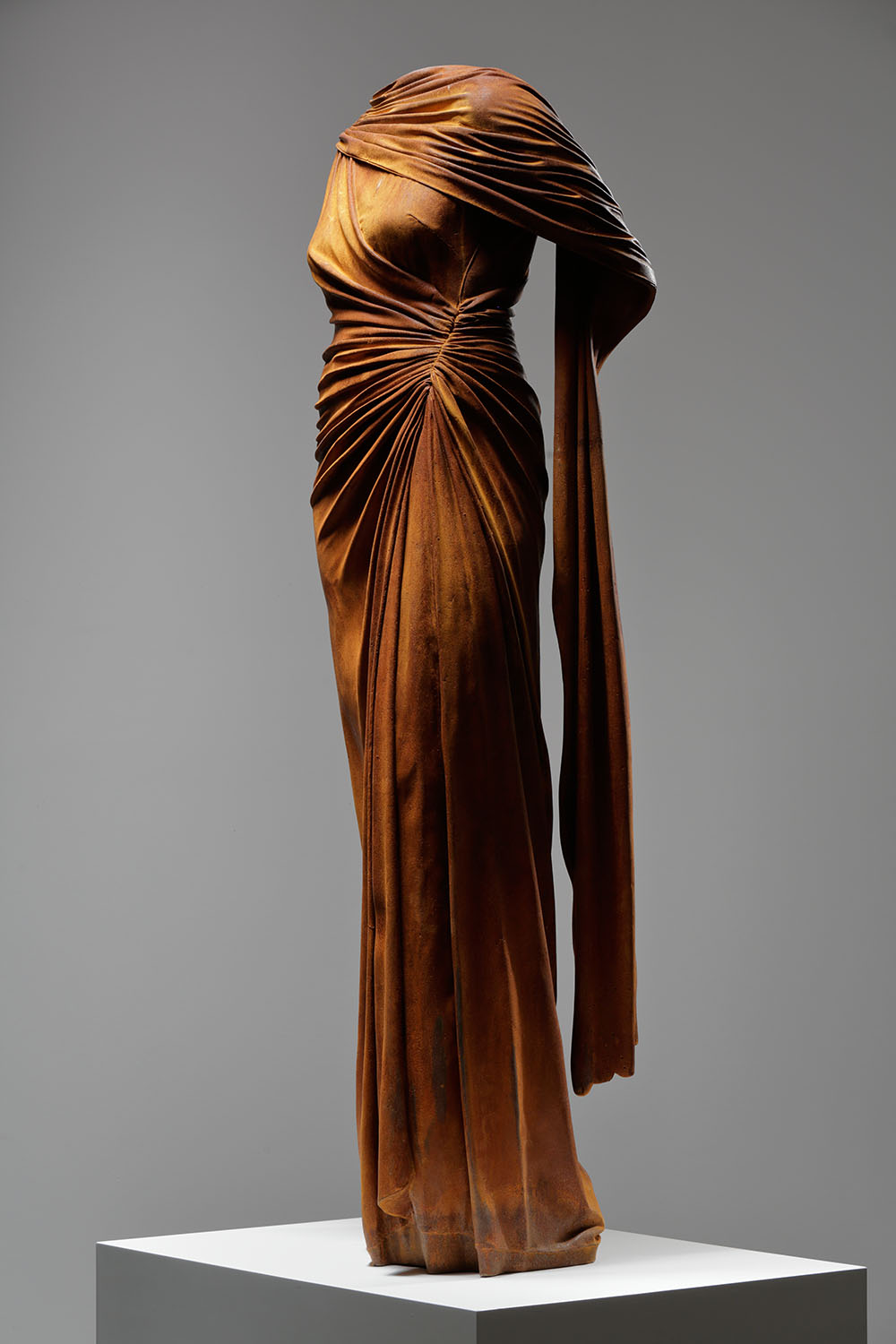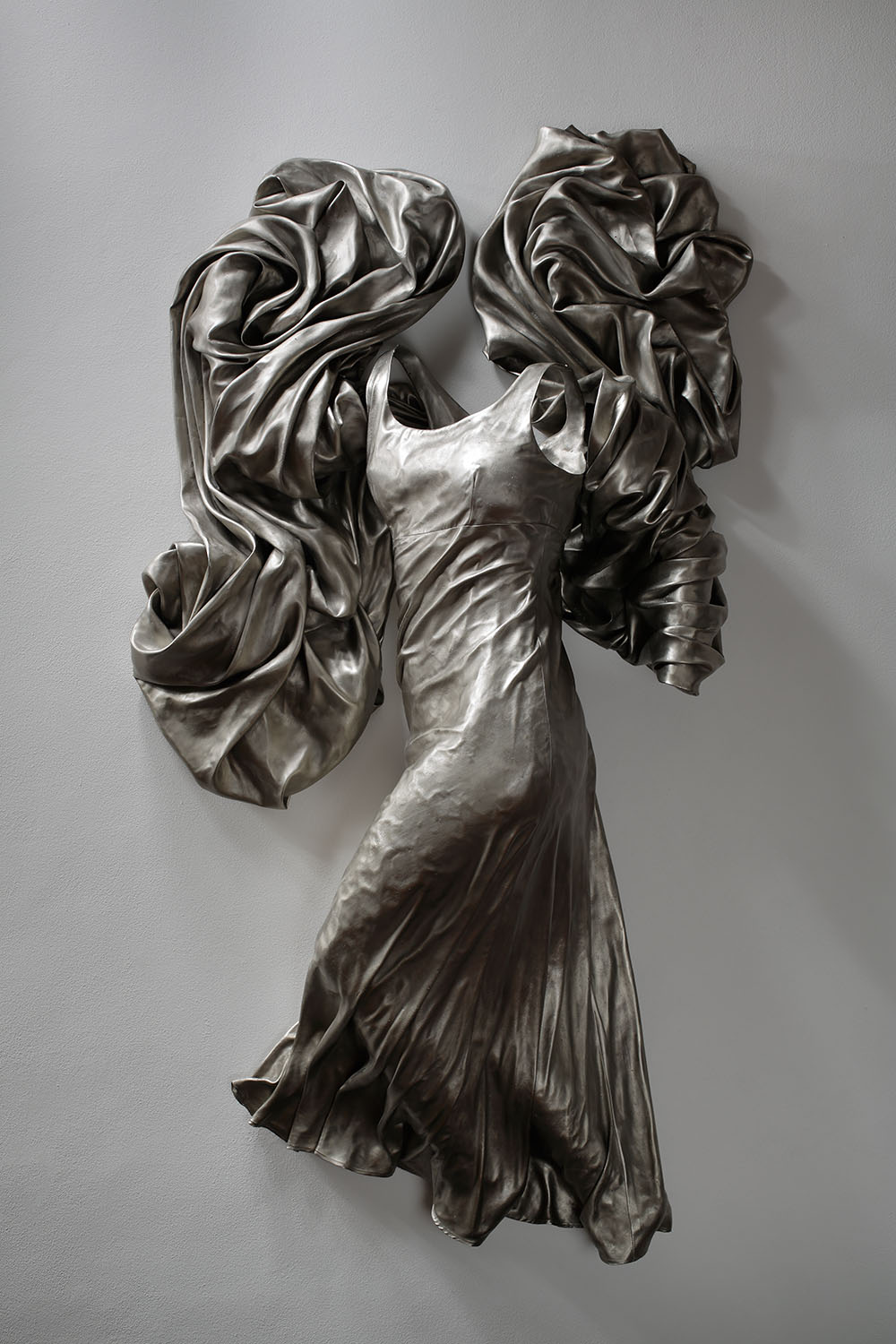For More Information
Alice Hammond
Director
ahammond@gpgalleryny.com
On view at Gerald Peters Contemporary, New York
24 E 78th St.
M-F 10AM – 5PM
and by appointment
Like many of the sculptors who defined the Neoclassical, Beaux Arts and Modernist periods in American art, Karen LaMonte focuses on the figure. Her works reveal a classical approach, often depicting the female form in contrapposto or as an odalisque with sweeping drapery. Yet unlike nudes portrayed by canonical artists like Saint Gaudens, Manship and Lachaise, LaMonte’s forms are absent bodies described by hollow garments. Instead of taking away clothing, therefore, LaMonte removes the figure itself; asking us to think about how social norms and cultural contexts shape the body—and by extension, its role in society.
Over the past two decades, LaMonte has created various representations of the absent human form, working through different lenses to examine how collective values effect particular views of the body. LaMonte’s Floating World series, conceived during a six-month period in Kyoto and developed in her Prague studio, are kimonos that reveal ideals of beauty seen in Ukiyo-e prints. Her Nocturnes portray the female figure as a metaphor for night, conveying how nighttime changes miens and deportments. Both series ask us to consider how women’s bodies communicate societal priorities, expectations, and models.
Writing recently on LaMonte’s seminal sculpture Vestige, 2000, now on view as part of the Renwick Gallery’s exhibition ‘The Present Moment,’ Kriston Capps said that on the one hand, the work is timeless and intriguing… “graceful and enigmatic.” Capps observes, though, that in the current political climate in America:
“’Vestige’ looks not just poetic but prophetic…..The eerie absence of the woman… reduced to the trappings of her old-fashioned dress, comes to the fore amid a raging public debate over the agency of people who could become pregnant.” [1]
Ultimately, LaMonte’s absent figures convey not only the specific conceptions of beauty reflected in the garments they wear, but also shifting ideas about how women’s bodies are presented, as well as their role in myriad critical issues. Juxtaposed with American figurative sculpture of the 19th and 20th centuries, LaMonte’s works nod to the classical tenets that guided her predecessors, but also define a new stylistic identity for the contemporary era.
[1] Kriston Capps “At the Renwick Gallery, craft that captures our polarized times,” Washington Post, August 6, 2022.




